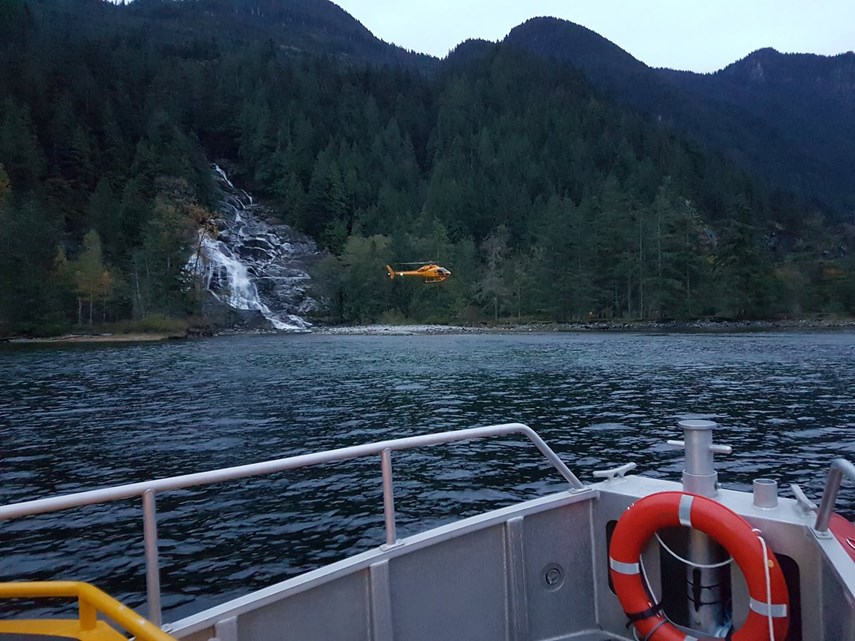It took multiple agencies, by air and sea, to rescue an injured hiker who spent eight days in the bush in a remote area of Indian Arm.
North Shore Rescue was called into action Saturday afternoon after a man failed to return home from a planned week-long hike in the backcountry. The 48-year-old man was attempting the Indian Arm Crest Route, a 68-kilometre trek that circumnavigates Indian Arm via the high ridgelines that start at Eagle Mountain in Coquitlam, then head back down to sea level at Granite Falls, through Tsleil-Waututh reserve land at the top of Indian Arm and then south again to the top of Mount Seymour.
“We don’t get too many on that route,” said Doug Pope, search manager. “It’s by no means a trail and I wouldn’t want to get people thinking it is.”
Based on the hiker’s last known location on Eagle Ridge, Pope called in Coquitlam Search and Rescue to focus on the area in their jurisdiction and the Royal Canadian Marine Search and Rescue Unit 2 to start scanning the shorelines.
While they were in the air, Pope got a text from the man that simply said: “Hi Doug.”
“That was it,” Pope said. “But it was at least a message that he had limited cell reception and he was still alive. That was good news for us but we still didn’t have very much to go on.”
While they were trying to deduce where he might be, the hiker managed to get a call to 911, allowing North Shore Rescue to get his exact co-ordinates. He was on the powerline right of way above Granite Falls.
Just before darkness fell, crews spotted him from the air and dropped in two field teams.
Pope said the man had been through “quite an ordeal.”
“He had taken several falls, one significant enough on rock to break a rib,” Pope said. “He was pretty much done. He was eight days in and only through a quarter of the route he had planned and no way really to get home from there and obviously now, injured. He was lucky to come out with that relatively minor injury and not something worse.”
The field teams hiked the man down to the water’s edge at Granite Falls where an RCM- SAR Zodiac was waiting.
“It was a really good co-ordinated effort between three different agencies and Talon helicopters,” Pope said.
Compared to most rescue subjects, the man was uniquely well prepared, Pope said. He was carrying two cellphones with a spare battery and a solar charger, maps, a compass and an electronic mapping app on his phone.
“He had the most detailed trip itinerary I’ve ever come across in my search and rescue days,” Pope said.
But North Shore Rescue doesn’t recommend people attempt that route under any circumstances, Pope said, and travelling solo increases the risk. If the man had been carrying a satellite phone, he probably would have called for help sooner, Pope added.
“For that kind of area, you need two-way satellite communication,” he said.



